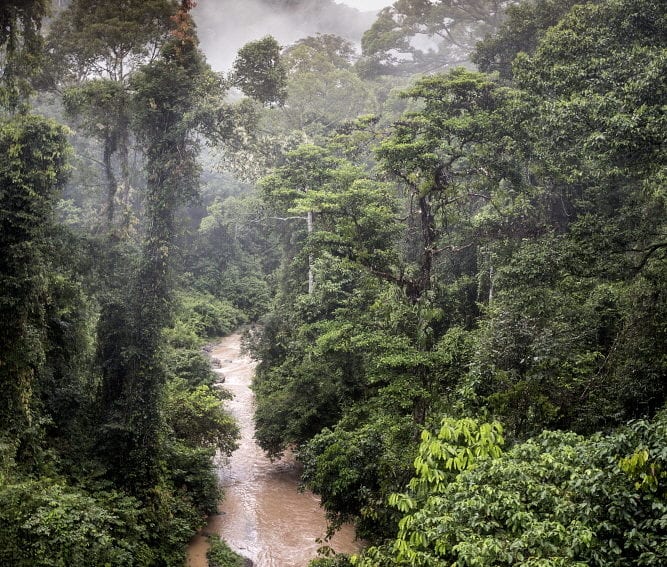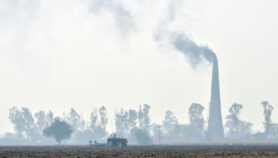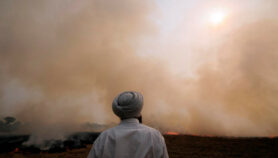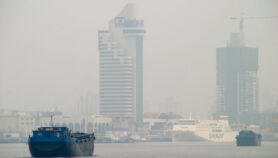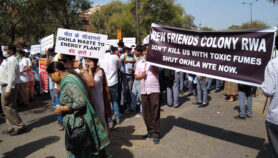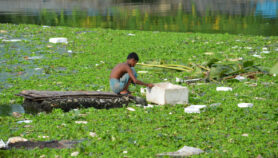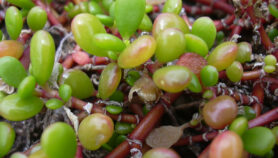By: Brendon Lee
Send to a friend
The details you provide on this page will not be used to send unsolicited email, and will not be sold to a 3rd party. See privacy policy.
[KUALA LUMPUR] Scientists have discovered pollutants from East Asia in the Borneo rainforest threatening the ecology of one of the world’s oldest green lungs.
While running tests to detect sources of bromine and chlorine, the scientists also found a non-natural gas called perchloroethene, or perc, commonly associated with industrial and commercial activity such as metal degreasing and textile manufacturing, according to the research published 31 March in Atmospheric Chemistry and Physics, an open access journal of the European Geosciences Union.
The scientists who come from the University of Cambridge, United Kingdom and the University of Nottingham Malaysia Campus believe the human-made gas pollutants were transported through cold surges from East Asian countries such as China. Cold surges are a weather phenomenon that occurs during northern hemisphere winter when pockets of cold air move quickly southwards across Asia towards south China and onward into the South China Sea.
“Our study shows that pollution can travel quickly from East Asia to tropical South-East Asia. But we do not expect to see dangerous levels of pollution such as seen in China to occur in South-East Asia because the atmosphere naturally dilutes the pollution over time, and because the strong winds from East Asia to South-East Asia only occur at certain times in the year,” says Matthew Ashfold, assistant professor at the University of Nottingham Malaysia Campus and co-author of the study.
“But we are concerned that traces of perc might also indicate (presence of) other harmful chemicals such as carbon monoxide and ozone. As thunderstorms usually occur in South-East Asia during the northern hemisphere winter, the polluted air can be lifted towards the upper atmosphere if it reaches the deep tropics, causing negative impact to the ozone layer,” Ashfold explains.
Exposure to perc is usually harmless to humans unless in large amounts of above 100 parts per million. But the combined presence of ozone and carbon monoxide can damage forests and impede plant growth, which could have adverse effects on the ecology of the rainforest and on the communities that rely on it for their livelihood.
“The indigenous peoples of the Malaysian peninsula, Sabah and Sarawak are very reliant on the rainforest ecology to sustain their living. They are physically and culturally bound to the forest for their livelihood,” Anthony Tan, executive director of the non-profit group Centre for Environment, Technology and Development Malaysia (CETDEM), tells SciDev.Net.
“If the forest fauna is affected by the pollutants, it will only be a matter of time before this situation will have an adverse effect on the indigenous people's life in terms of food, water and collection of produce from the forest,” Tan points out.
“Borneo has also been affected by haze due to open forest fires from Indonesia. Should pollutant levels continue to increase over time, we may have a situation like mainland China where coal-fired power stations have made it unbearable to even walk in the streets of the larger cities. Acid rain will also be one side-effect the agriculture sector will have to struggle with,” Tan notes.
>Link to full paper in Atmospheric Chemistry and Physics
This article has been produced by SciDev.Net's South-East Asia & Pacific desk.
References
Atmospheric Chemistry and Physics doi: 10.5194/acp-15-3565-2015 (2015)


